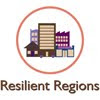As a result of last month's post-disaster recovery retreat in Cassopolis, Michigan (see Vegas of the North post), the International Economic Development Council, in partnership with NADO and BCLC, has drafted a series of recommendations on how our federal partners (FEMA, HUD, SBA, EDA, etc) could assist communities in taking a more proactive approach to economic recovery following a disaster event.
The formal paper will be available on our website shortly, but in the meantime here are a list of the recommendations proposed:
1. Establish a cognizant federal agency responsible for post-disaster economic recovery and provide appropriate resources.
2. Establish a special fund for economic recovery in the amount of $100 million to be kept on hand at the federally-designated agency for post-disaster economic recovery.
3. Remove the log-jam at the federal level in terms of the application review and use of federal funds as they relate to post-disaster economic recovery.
— Expedite the application process for federal funds
— Improve the consistency of requirements among federal programs
— Update federal criteria/regulations to meet post-disaster realities
4. Provide a trigger mechanism for waiving certain regulations on the use of federal funds in the unique situation of a disaster.
5. Consider adding “disaster recovery” as a fourth national objective to HUD’s CDBG Disaster Recovery Assistance program, OR consider redefining the third national objective so that eligible activities also meet economic recovery needs and can be used for a longer period of time relative to the size and scale of the disaster.
6. Change regulations to enable community organizations to use federal funds, including CDBG funds, for regional marketing and branding purposes.
7. If a community is planning to use federal dollars for a business loan program, ensure that program funds get de-federalized after initial use for maximum flexibility in the long-term financing of economic recovery.
8. Provide greater flexibility in the use of federal funds for increasing local capacity for economic recovery. This includes covering the salaries of local and state public employees, as well as the salaries of contracting nonprofit organizations, which are providing business recovery services and needed technical assistance.
9. Provide greater flexibility in the use of federal funds for funding economic impact assessments from an independent, non-biased source.
10. The federal government should provide more information on the availability of different federal programs both before and after a disaster to help local communities better navigate the federal system.
11. The federal government should develop a central repository of best practices in economic recovery as a reference tool for local communities.
12. Design federal inter-agency agreements (IAA), such as the IAA between HUD and FEMA, so that state and local government are part of those agreements and initial working relationships.
13. Federal agencies should proactively explain the specifics of duplication of benefits (DOB) and should develop better systems to deal with DOB.
14. Increase federal funds for non-traditional loan programs and expand the use of funds to include equity financing and loan loss that can leverage private resources for immediate small business recovery needs.
15. Increase the industrial development bonds (IDB) single-issuance capacity to $50 million and provide a guarantee by the federal government to provide further assistance to small businesses.
16. Consider tax incentives similar to programs in ARRA that benefit small businesses.
17. Consider financial incentives similar to programs in the Gulf Opportunity Zone Act and ARRA whereby businesses are provided federal tax incentives to reinvest in disaster-impacted areas.
18. Consider financial incentives similar to programs in New York after September 11th and in ARRA that help government agencies raise capital to redevelop infrastructure critical to the business community.
19. Consider providing federal funds for wage subsidy and job training programs to provide immediate, medium- and long-term assistance designed to retain and attract workers. There is a precedent of an effective program developed in NYC after September 11th attacks.
20. Consider pre-positioning temporary housing for certain industries that are identified by communities as being core economic recovery and/or growth engines in the wake of a disaster. Also, consider re-inventing FEMA/federal government temporary housing programs for administration by local government with a market-driven site selection process.
Thursday, January 14, 2010
Subscribe to:
Comments (Atom)




